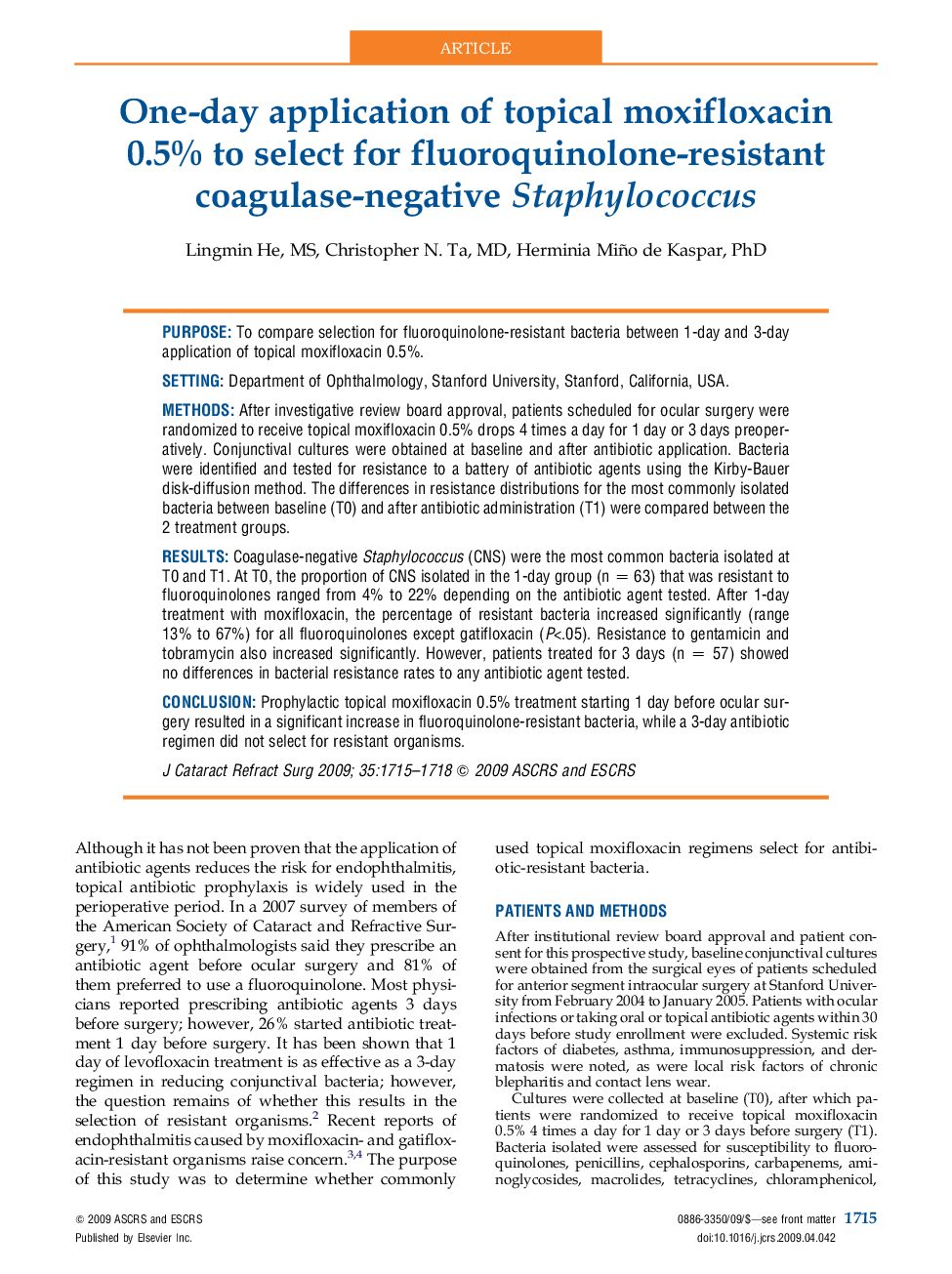| کد مقاله | کد نشریه | سال انتشار | مقاله انگلیسی | نسخه تمام متن |
|---|---|---|---|---|
| 4021160 | 1262052 | 2009 | 4 صفحه PDF | دانلود رایگان |

PurposeTo compare selection for fluoroquinolone-resistant bacteria between 1-day and 3-day application of topical moxifloxacin 0.5%.SettingDepartment of Ophthalmology, Stanford University, Stanford, California, USA.MethodsAfter investigative review board approval, patients scheduled for ocular surgery were randomized to receive topical moxifloxacin 0.5% drops 4 times a day for 1 day or 3 days preoperatively. Conjunctival cultures were obtained at baseline and after antibiotic application. Bacteria were identified and tested for resistance to a battery of antibiotic agents using the Kirby-Bauer disk-diffusion method. The differences in resistance distributions for the most commonly isolated bacteria between baseline (T0) and after antibiotic administration (T1) were compared between the 2 treatment groups.ResultsCoagulase-negative Staphylococcus (CNS) were the most common bacteria isolated at T0 and T1. At T0, the proportion of CNS isolated in the 1-day group (n = 63) that was resistant to fluoroquinolones ranged from 4% to 22% depending on the antibiotic agent tested. After 1-day treatment with moxifloxacin, the percentage of resistant bacteria increased significantly (range 13% to 67%) for all fluoroquinolones except gatifloxacin (P<.05). Resistance to gentamicin and tobramycin also increased significantly. However, patients treated for 3 days (n = 57) showed no differences in bacterial resistance rates to any antibiotic agent tested.ConclusionProphylactic topical moxifloxacin 0.5% treatment starting 1 day before ocular surgery resulted in a significant increase in fluoroquinolone-resistant bacteria, while a 3-day antibiotic regimen did not select for resistant organisms.
Journal: Journal of Cataract & Refractive Surgery - Volume 35, Issue 10, October 2009, Pages 1715–1718